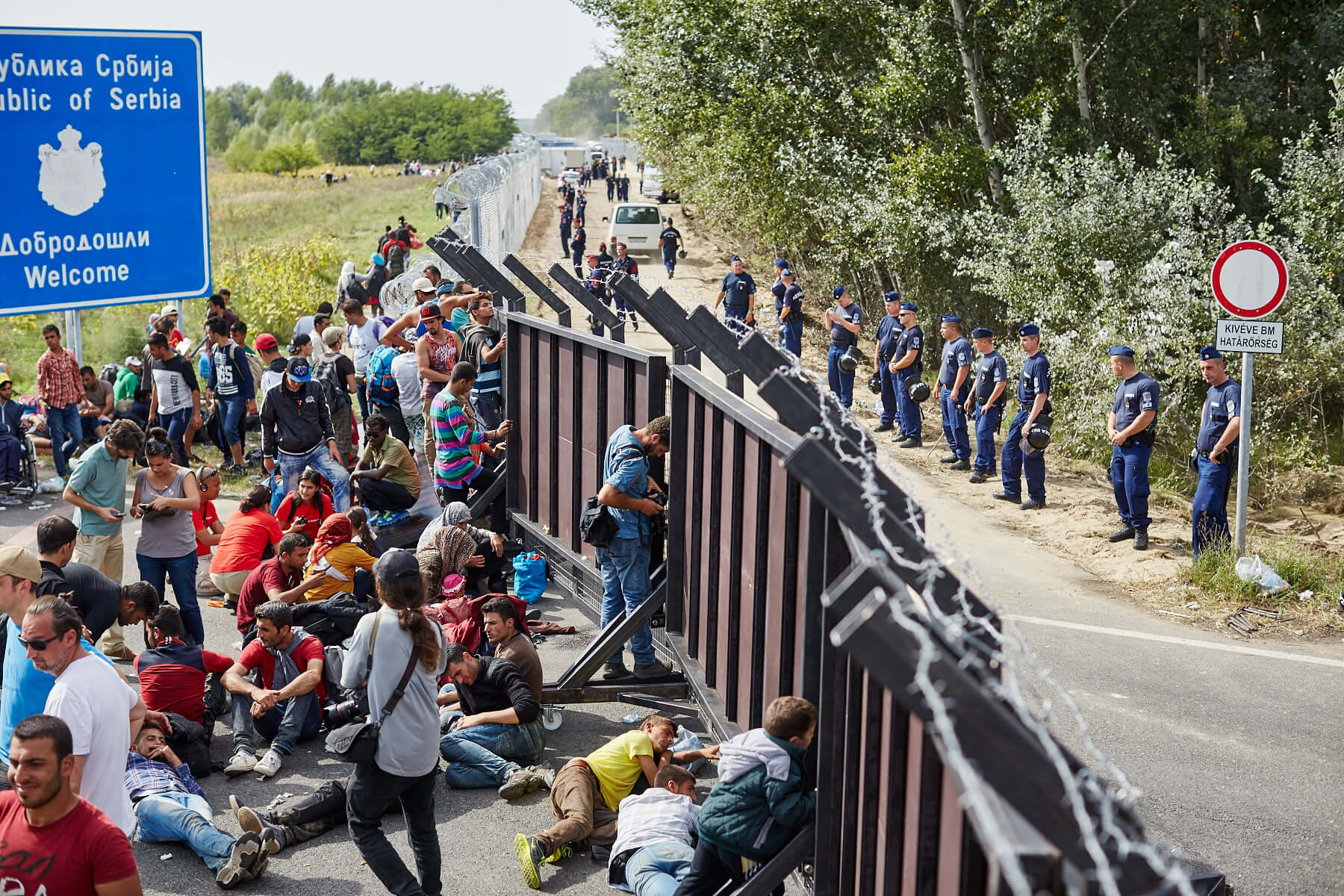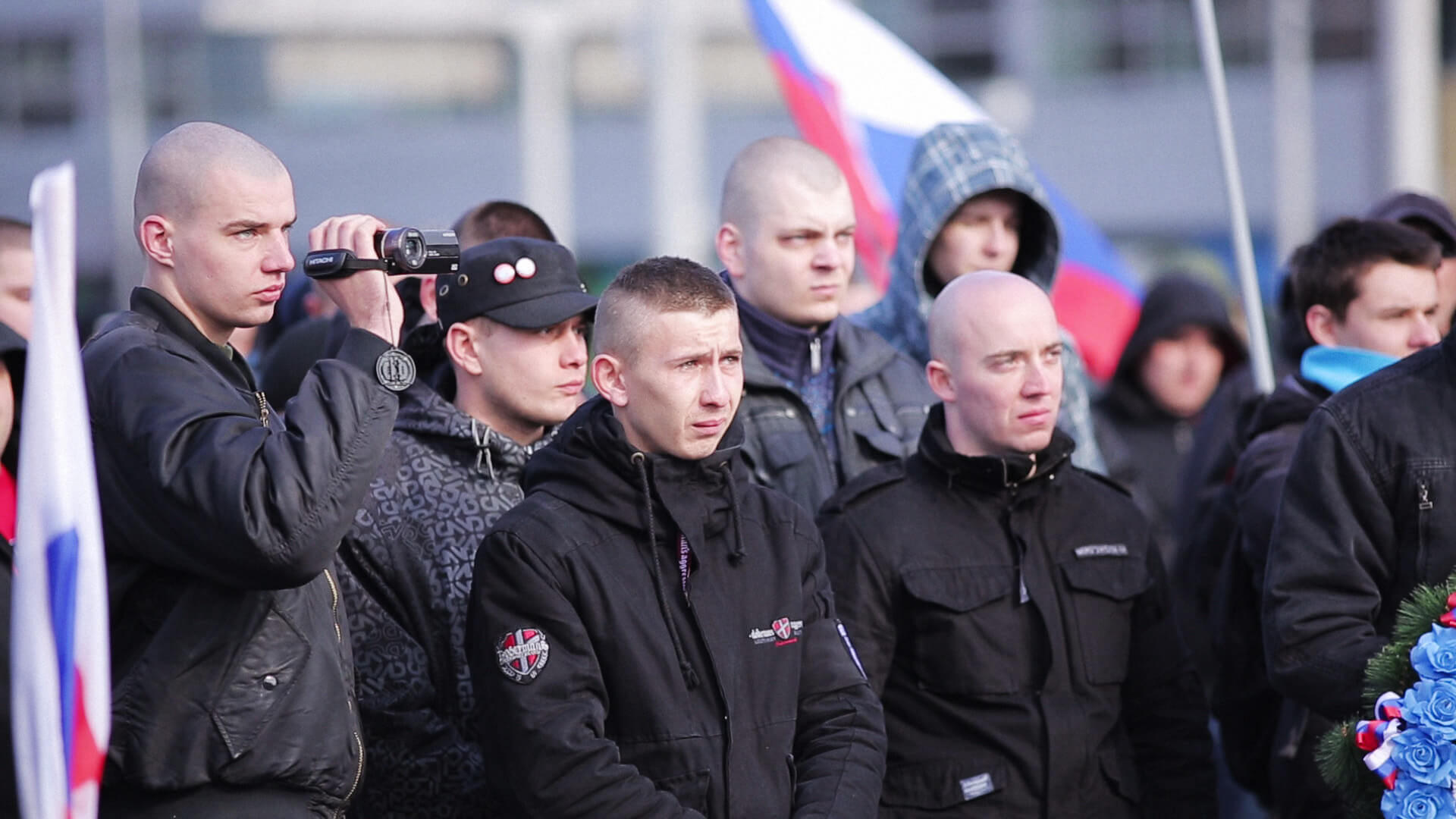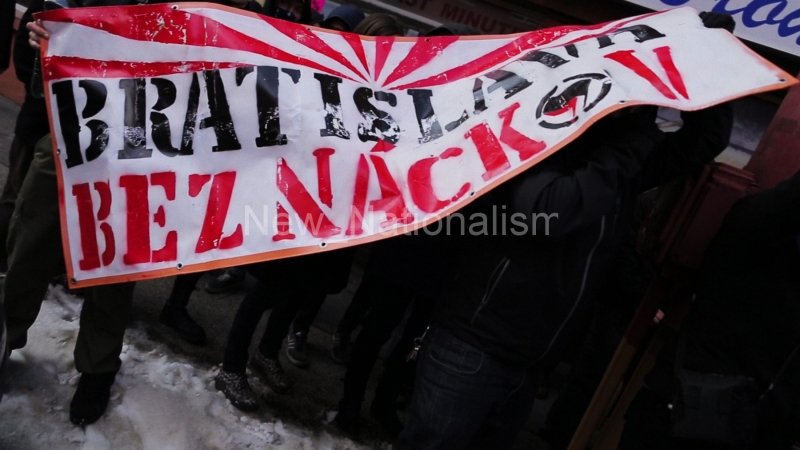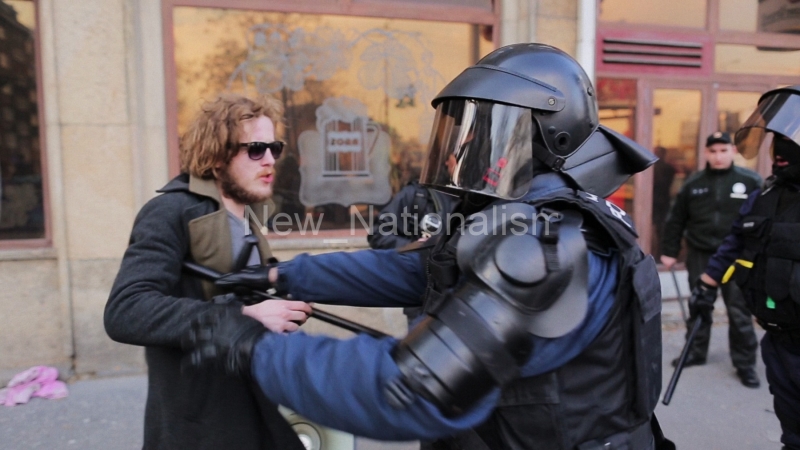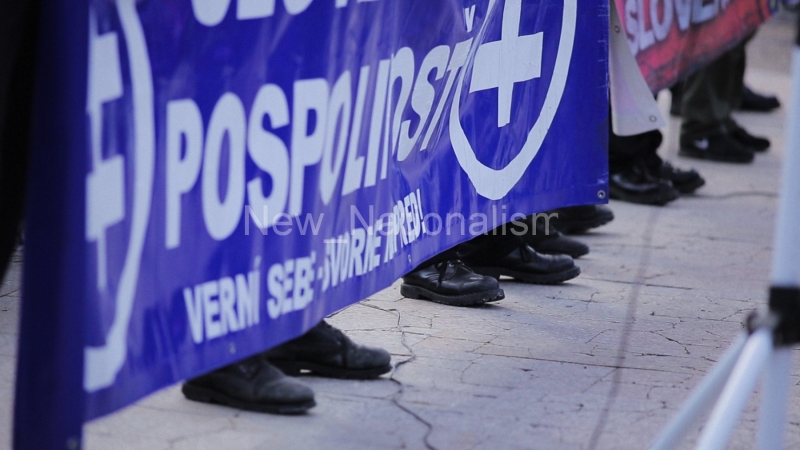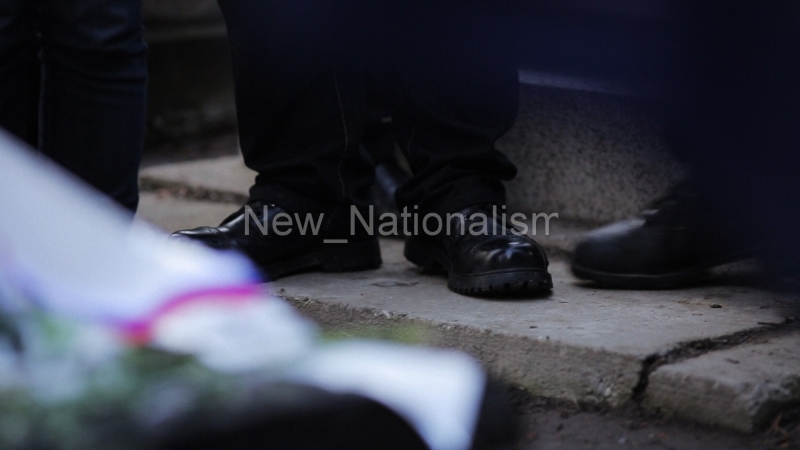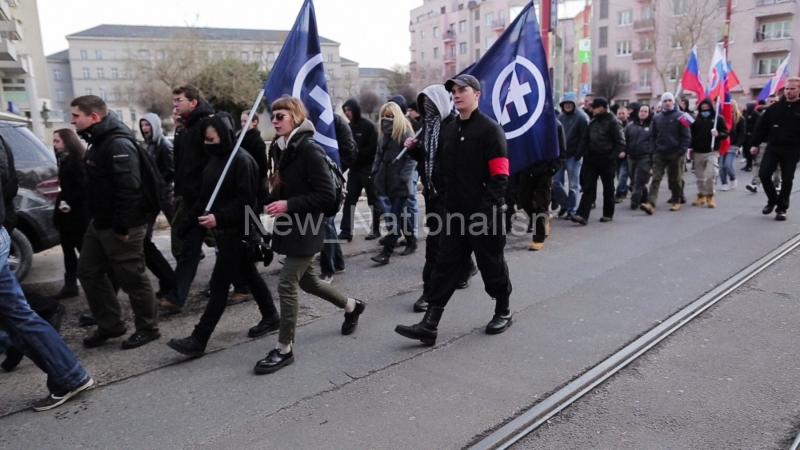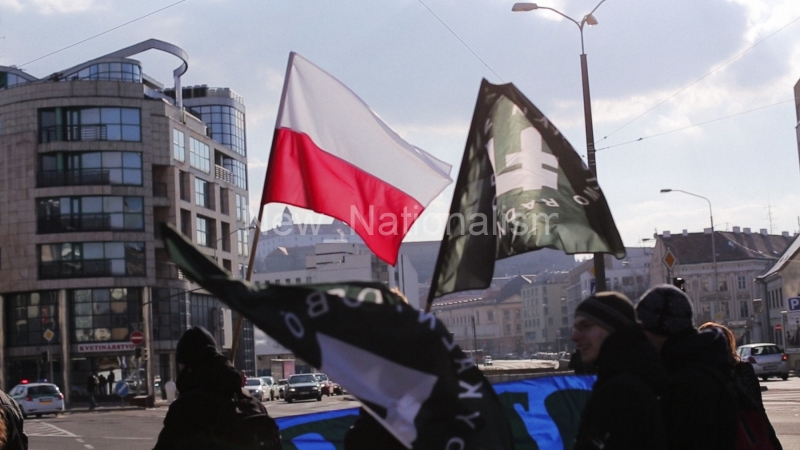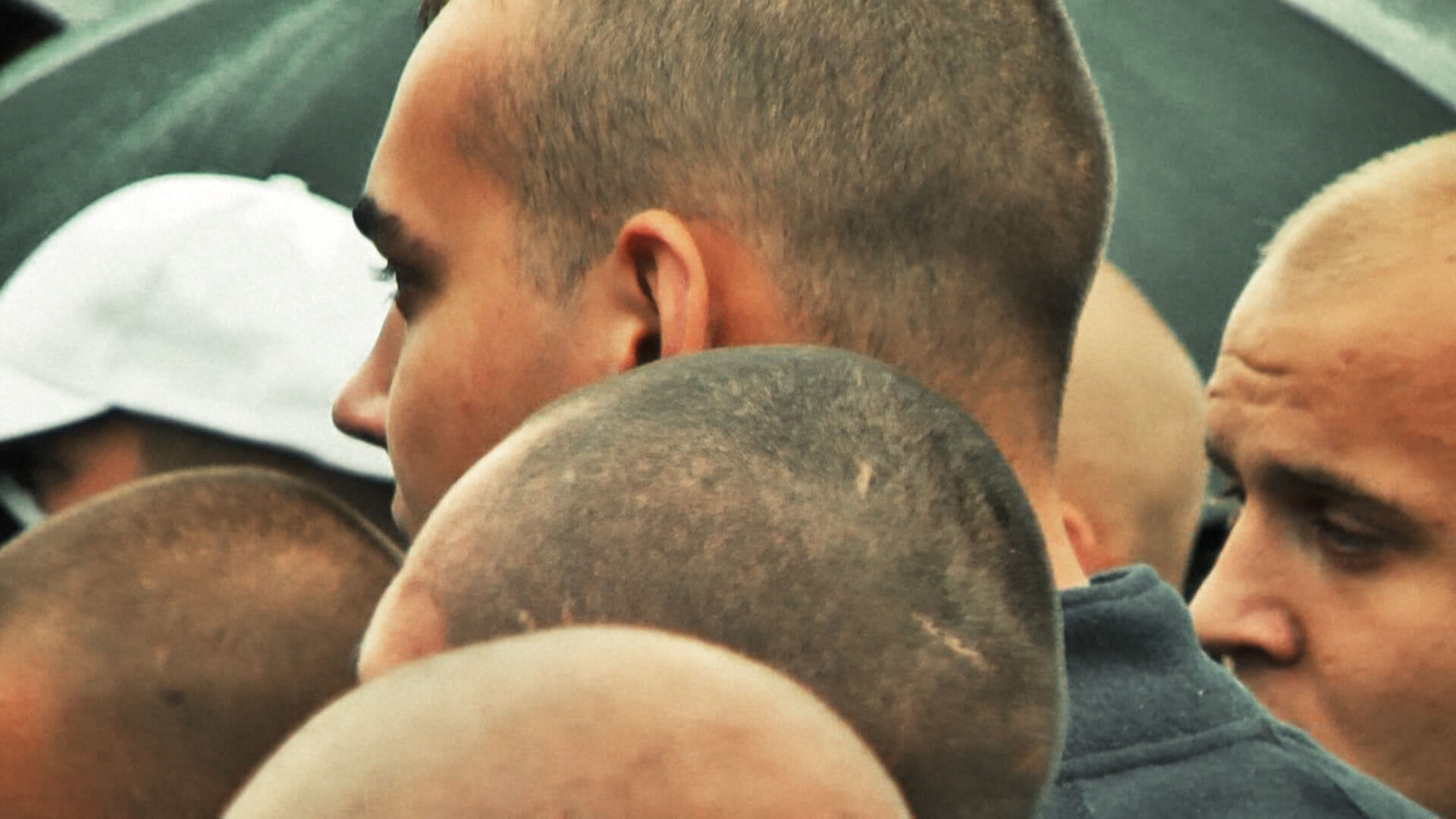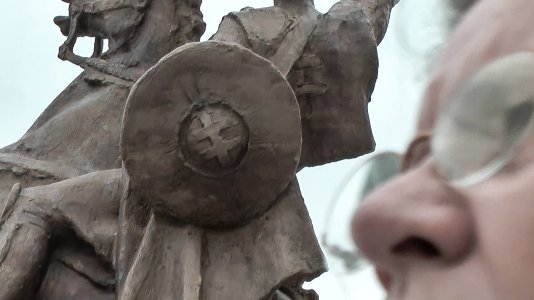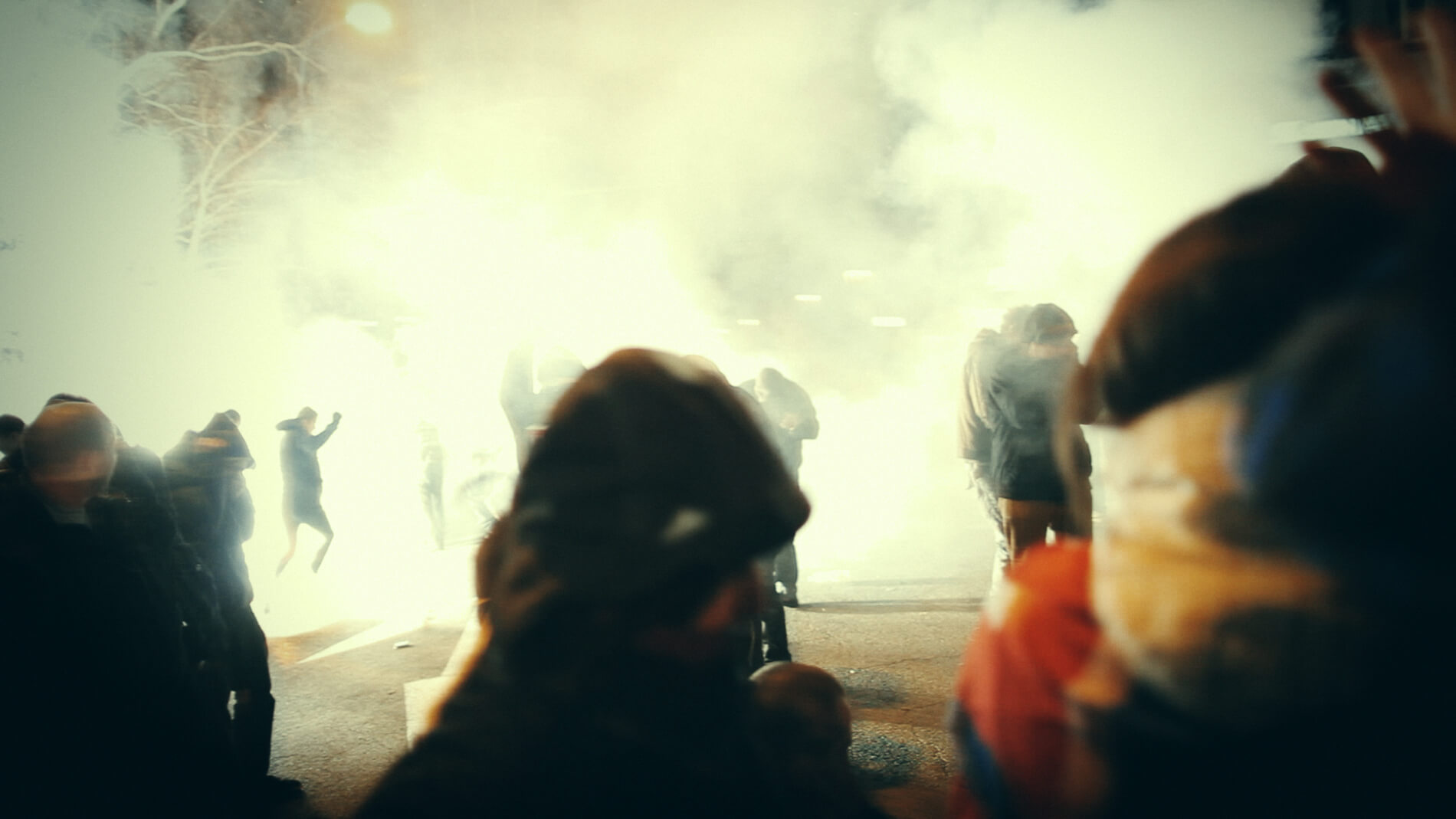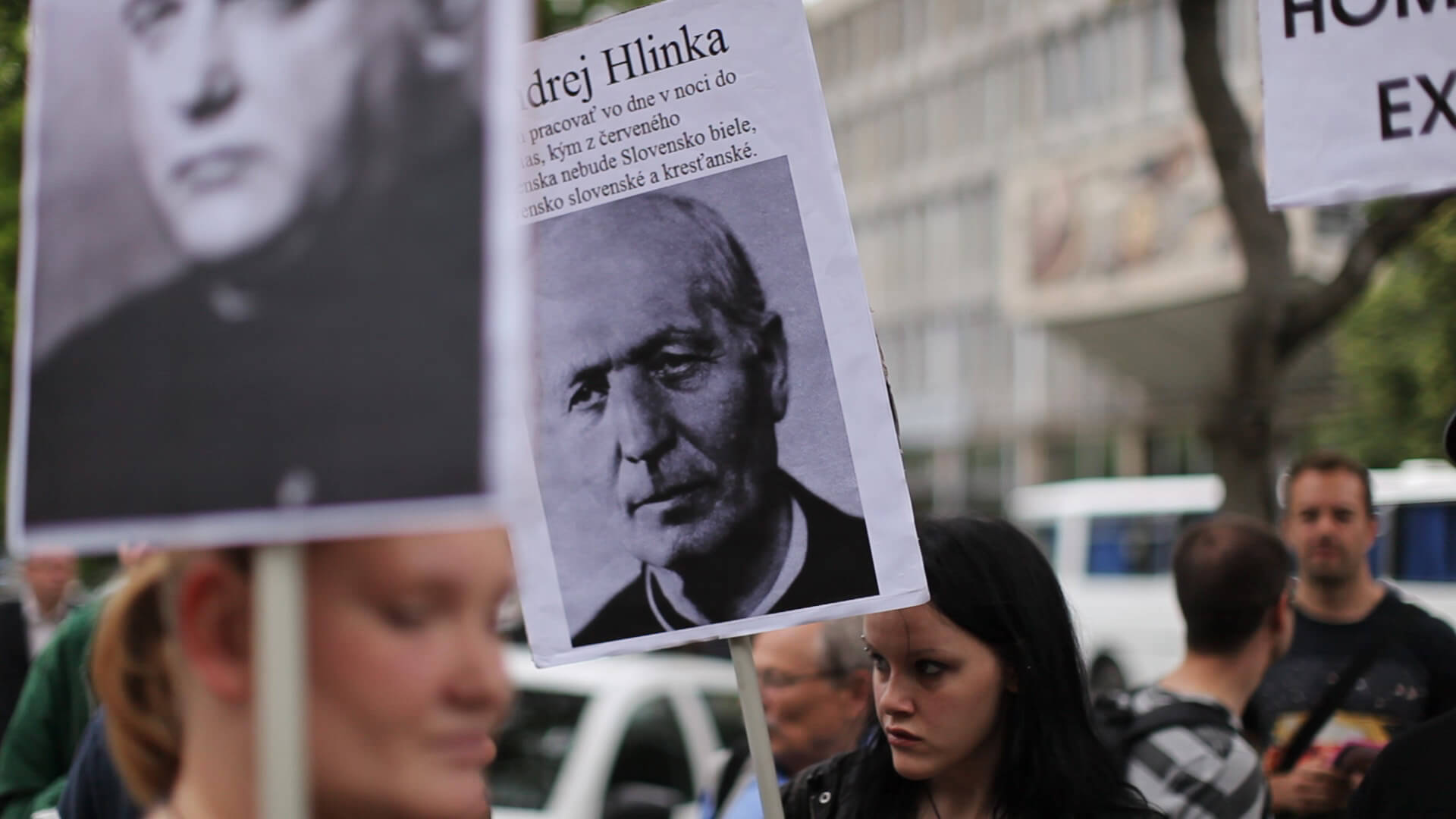On March 16, 2013, around 200 people gathered at SNP Square in Bratislava to block the path of far-right extremists marching to the grave of Jozef Tiso. The blockade was personally supported by the city’s mayor, Milan Ftáčnik, who led the procession waiting for the arrival of the neo-Nazis.
The office announced the blockade at the mayor’s request the day before the event. Ftáčnik emphasized the importance of expressing opposition to the far-right in a lawful and peaceful manner, so as not to give them an excuse to claim that the blockade was the one breaking the law.
The organizers of the far-right event, named “March for a Free Slovakia,” eventually decided to avoid SNP Square. However, the blockade participants headed to Martinský cemetery, where about half of them gathered in front of the entrance.
The extremists had obtained proper permission for the march from Staré Mesto (Old Town). According to Tomáš Halán, a spokesperson for Staré Mesto, the purpose of the gathering, which was to commemorate the founding of the first Slovak Republic, did not warrant its prohibition.
The march’s organizers aimed to express their disagreement with Slovakia’s membership in the European Union, which they perceive as a loss of the country’s independence. However, some critics see the main motive of such marches as the public expression of sympathy for neo-Nazism or neo-fascism.
Despite some parts of the public condemning the blockade attempt as publicity for the extremists, political scientist Tomáš Nociar argues that democratic society has a moral obligation to stand against extremism.
Various supporters of the demonstrators attended the event, including honorary president of the Central Union of Jewish Religious Communities Pavel Traubner or political scientist Grigorij Mesežnikov. Throughout the day, the police closely monitored the situation, with dozens of state and city police patrols on the streets and a water cannon on standby.
















